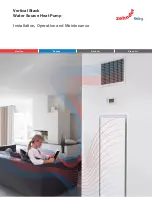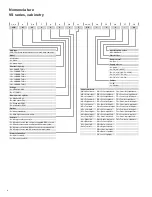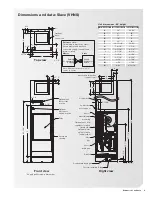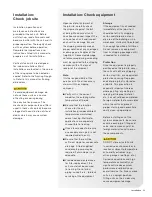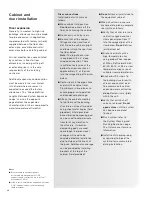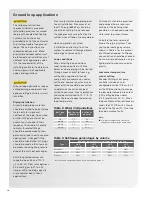
Riser material, sizing, installation and expansion
All factory supplied risers and riser extensions are
insulated for the full length of the riser, eliminating
the need for field insulation. Any concerns regarding
excessive expansion and between-the-floor
fireproofing have not been addressed in the Zehnder
Rittling design and any additional materials to
accommodate these concerns are to be field supplied
and installed using proper building practices and local
building codes.
Generally, in medium to high-rise buildings, allowances
must be made for pipe expansion. Vertical Stack Water
Source Heat Pump units are furnished with integral
copper expansion loops that allow up to 1" of riser
expansion and contraction. Additional expansion
compensation must be made in the riser system in the
field where movement is expected to exceed factory
allowances. The table showing allowable riser lengths
between system expansion loops displays expansion
characteristics of risers compared to water temperature
Allowable riser lengths between system
expansion loops
1½ inch pipe size
1 inch pipe size
Water temperature difference ° F
Riser Length for 1 inch and 1½ inch expansion - ft.
20
0
50
100
150
200
250
300
350
400
450
500
550
40
60
80
100
120
140
160
differential. Assuming a hot water temperature of
120 °F and 45 °F condenser water, the temperature
difference of 75 °F indicates 150 feet of riser will expand
or contract 1". To eliminate stress, a riser system must
be anchored to the building structure at least once.
Technical information on pipe expansion, contraction
and anchoring can be found in the ASHRAE HVAC
Systems and Equipment Handbook and various other
technical publications. Riser expansion and anchoring
is the responsibility of the design engineer and installing
contractor. Ensure all condensate, riser, P-trap and
drain pan connections are secure.
13
Installation

